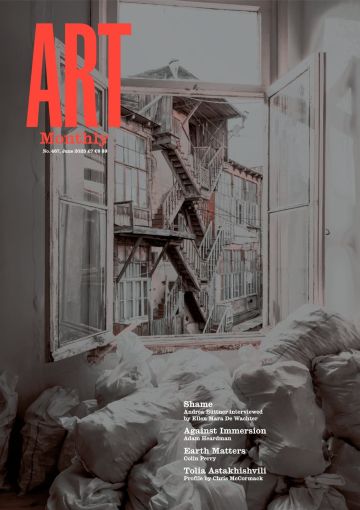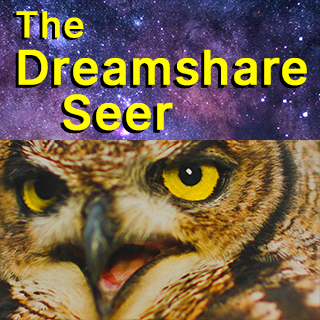Review
Steve McQueen: Grenfell
Elisabetta Fabrizi experiences film installation as an act of remembrance

Steve McQueen, Grenfell, 2023
For the greater part of a career spanning cinema, television and gallery exhibitions, Steve McQueen (Interview AM202) has highlighted racism and discrimination by consistently placing marginalised individuals centre stage in order to make visible the violence that stems from persisting societal inequalities. The artist pushes this further with Grenfell, a self-funded project that uses the language of film to take us into the horrors of a tower destroyed by racism, class distinctions and greed as much as by fire. Six months after the Grenfell Tower fire on 18 December 2017, McQueen set out on a helicopter to make a film in support of the Grenfell community and to gather evidence from the scene of a crime before it would be covered up.
The installation at the Serpentine consisted of three spaces: a waiting room, a screening room and a remembrance room. The 24 minute-film – which could only be viewed from start to finish and as part of a group of around 50 visitors – was projected at fixed intervals in the Serpentine’s rotunda, which was turned into a cinema-like space. A white screen enabled viewers to gather their thoughts for several minutes before the projection turned black and the one unedited film sequence that makes up the core of Grenfell started.
Initially, as the sound of the city emerges from the black screen, we see a wide aerial shot over London’s suburbs, McQueen’s camera acting as a giant telescope that surveys the expanse of the built environment. Steadily pushing in from the suburban landscape into the city, the camera eventually turns right, flying towards the burnt tower that becomes progressively more recognisable with its distinctive blackness. At this point, the artist seems to suggest that the placid macroscopic context of the aerial shot does not offer enough data or sufficiently express the reality of the events that unfolded on 14 June 2017 in one of the most affluent boroughs in the world. The work, therefore, takes a drastically different turn. As we get closer to the tower, the gentle, familiar ambient sound of birds, cars and trains that has accompanied us for several minutes, turns into a loud menacing hum which – when the camera abruptly stops in front of the charred skeleton of the Grenfell Tower – suddenly gives way to complete silence. The static frontal shot lets us take in the amount of scarring left by the blaze, and then, after several seconds, we begin to circle the building. The feeling of calm, detached distance conveyed by the aerial view of the city is replaced by the physical sensation of frenzied closeness, aided by an arcing shot that swirls along the vertical axis of the high-rise, permitting us to analyse the structure at different heights. As if taking on the role of a forensic scientist recovering evidence before it disappears or is deliberately disposed of, McQueen zooms inside the remains of the burnt homes and onto the scorched facade as far as the technology allows.
The images that the artist gathers are tragically similar to the archival forensic photographs he used to retell the story of the 1981 New Cross fire in Uprising, his 2021 three-part BBC documentary series recounting a tragedy in which 13 young black people aged between 14 and 22 died, and for which no one has ever been convicted. Grenfell, however, was not made for television, and this allows McQueen to deploy his art-making and rigorous installation expertise most skilfully, reaffirming his belief in the power of contemporary art to drive social and political change as well as to suggest that a different method of public scrutiny is needed.
As in much of his previous work, McQueen makes the most of the intrinsic realism of the filmed image – its realist ontology – while exploiting the emotional and powerful hold that a pictorial image can have on the onlooker. For instance, the bird’s-eye view of the tower warps the concrete shell, generating abstract images that give us the sensation of observing the building through the heat of a fire; or the circling of the building that becomes relentless, speeding up increasingly, leading to a feeling of confusion and sickness that mirrors the emotions the viewer feels when confronted by the violence of the blaze. These moments are interlaced with views of the surrounding area, and offer a chance to observe the classist indifference that has allowed two nearby towerblocks to remain clad in similar, highly flammable material. As the camera stops on a frontal view of the burnt tower, the ambient sound of a plane departing emerges from the silence, yet the camera does not retreat into the wider landscape, suggesting that there is no way to unsee what has been seen, no way to cover up what has been uncovered. After fading into black, the screening ends without credits, returning to a projection of white, before viewers are asked to leave via a room in which the names of the 72 victims are listed on the wall and which provides a space of remembrance.
As McQueen explains in one of the two texts accompanying the exhibition, this is a highly personal project for him because he spent his early years selling clothes in a market not far from the White City estate. This deeply felt engagement and empathy with individuals whose chances in life are determined by their race, class and lack of privilege are palpable in the work. It makes Grenfell one of the most explicit examples to date in which McQueen’s background fuels his practice and the powerful ways in which his work foregrounds the interrelation of race with class.
Steve McQueen’s Grenfell was screened at Serpentine, London from 7 April to 10 May 2023. 14 June 2023 marks 72 months since 72 people lost their lives. Join Grenfell United and show those responsible that Grenfell is not forgotten: grenfellunited.org.uk.
Elisabetta Fabrizi is a curator, critic and academic based in Newcastle upon Tyne.
First published in Art Monthly 467: June 2023.









